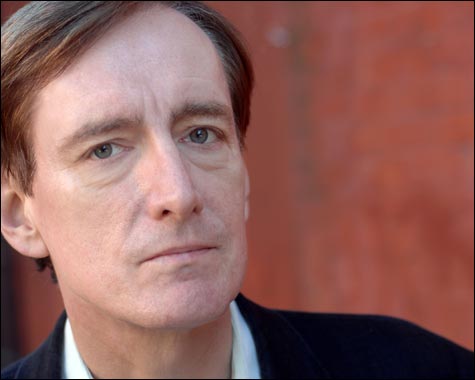
Ned Sublette |
| The World That Made New Orleans: From Spanish Silver to Congo Square | By Ned Sublette | Lawrence Hill Books | 352 pages | $24.95 |
Even before Katrina wreaked its havoc on New Orleans, a popular T-shirt proclaimed the city “Third World and Proud of It,” and numerous more-literary types have long referred to it as the “northernmost Caribbean city.” Anyone who has spent time there knows the truth of both these claims, how a mix of crime and culture, poverty and idiosyncrasy, distinguishes this Louisiana port town. How New Orleans became so distinctive, however, is another question, one that musician and author Ned Sublette attempts to answer in his new book.Sublette’s thesis, supported by exhaustive research, is that today’s New Orleans was shaped by the overlapping of six cultures, three open and three shadowed, as the French, Spanish, and finally the Americans colonized that bend in the Mississippi, bringing along enslaved Africans from the Senegambia (Senegal River) region, Kongo, and Ouidah.

These influences were consolidated, according to Sublette, by the 1791 revolution in Saint-Domingue. As former slaves fought to establish Haiti, “the second independent nation in the hemisphere,” the battles became mythic, and the island’s legend grew to be the “ghost that haunted New Orleans.” Sublette focuses on this revolution as a turning point throughout the New World, documenting how it triggered waves of immigration and reactionary push-back that lasted for decades. By the time Louisiana achieved statehood, in 1812, according to this view, the die was cast. The book’s official end is 1819, but Sublette looks farther to see that culture surviving, and still relevant, as Mardi Gras Indians face off even after Katrina.
Unlike the author’s earlier Cuba and Its Music, The World That Made New Orleans examines a range of cultural issues, from the impact of different kinds of slavery to a digression on the appearance of the word “vaudeville” in a 1736 manuscript and its possible origin in “voix de ville, voice of the town.” Music remains a touchstone, however, and Sublette’s research has both breadth and depth. In his attempts to understand the origins of the city’s distinctive sounds, he ranges from linguistics (tracing the word “funk” to both Middle English and Kikongo) to first-hand accounts of the arrival of both the first European opera in 1796 and Congo Square slave dances. Influences, he notes, that often cross-pollinated, as in the work of Louis Moreau Gottschalk, the man he calls “the most important 19th-century U.S. composer,” a man who was raised within hearing distance of Congo Square.
These historical excursions occasionally double back and join up with other references. A good 20 pages after a summary of the cultural influences of slaves from the Senegambian region, who included captives from cosmopolitan Mali, a separate discussion of the characteristic New Orleans ornamentation (such as expanding “Tina” to “Tipitina”) refers to both the French Baroque (particularly its “notes inégales”) and “the music of the Islamized Senegambia.”
In the face of such erudition, a few of the author’s choices are curious. The expulsion of the Acadians from British Canada in 1755, for example, merits only three paragraphs. But this is popular history, eminently readable, and Sublette writes with a comforting authority, posing theories with primary documents as both support and illustration. For those interested in the unique character of the Crescent City, he has given a detailed and plausible explanation of how that world came to be.
Editor's Note: In a previous version of this article the language Kikongo was misidentified as Kikoyo in the fourth paragraph of this article. Kikongo, or Kongo, is the Bantu language spoken by the Bakongo and Bandundu people living in the tropical forests of the Democratic Republic whereas the Kikoyo is an area in Uganda.